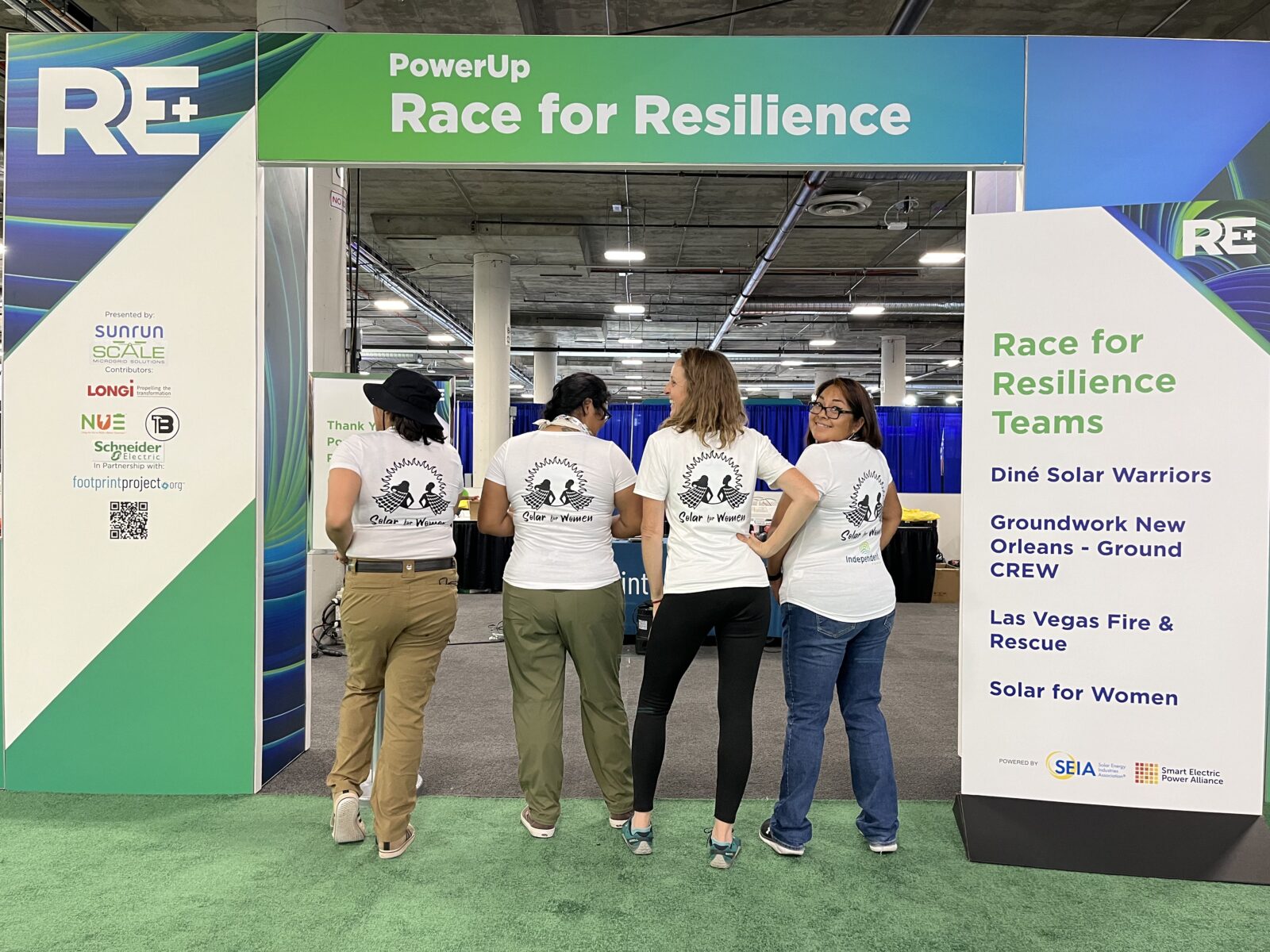For the first time in nearly three decades, the government is poised to require companies to disclose every month how many women and people of color they employ on federally-funded construction projects.
The new rules, proposed in late February by the Biden administration, follows a story by The Fuller Project in December that revealed women have been systematically left out of the booming alternative energy sector – including construction jobs in solar and wind. Our investigation found women comprise only 31% of the clean energy workforce – virtually unchanged since Barack Obama promised 5 million green jobs in 2008.
The Biden administration has made historic investments in green energy, including $370 billion in clean tech subsidies in the Inflation Reduction Act and billions more in Bipartisan Infrastructure Law. But without a mandate to track the participation of women and other historically under-represented groups in construction, civil rights advocates say the country risks leaving the majority of Americans behind.
“We cannot count on any private company, which is focused on the bottom line to, on its own, implement these national priorities, like hiring more women,” said Madeline Janis, executive director of labor organization Jobs to Move America. “If there is not good reporting and follow up, there's nothing.”

In an emailed statement, Michele Hodge, acting director of the Office of Federal Contract Compliance Programs, said the proposed rules were meant “to ensure that federal contractors are hiring workers that look like America.” Communities that had “been left behind in the past are a key part of this Administration’s vision for an economy that works for everyone,” she said.
Riley Neugebauer knows first hand how difficult it is to be a woman in solar. The blond, Boulder, Colorado-based panel installer founded Solar For Women — an affinity group for women in the industry. She said it took her over a decade to get into the business. And, even when she finally started working in the field, she found herself struggling to be taken seriously. When you’re a woman, she said, men often “don't believe that you're smart enough to do hands-on things.”
Neugebauer, 41, said men on job sites do double takes when they see her carrying tools. She’s been asked if her boss was her husband. In her second solar job, Neugebauer was supposed to be out in the field doing installation work, but she said she kept getting pushed into the office to do administrative tasks instead. This was frustrating and made it harder for her to fulfill the hours she needed to get her license, she said, delaying her career progression – unlike her male colleagues.
Under the terms of the proposed regulations, contractors who receive federal funds would be required to disclose the racial and gender breakdowns of their workforce on a monthly basis. They would also have to disclose the number of hours worked each month by workers in each level of seniority: forepersons, journeyworkers, apprentices and trainees. Prior to 1995, this data had been collected by the Department of Labor’s Office of Federal Contract Compliance Programs.
For years, an estimated 35,000 reports were filed by federal contractors every month, but the Clinton Administration abandoned this reporting requirement following the passage of the Paperwork Reduction Act that year which sought to minimize the burden of information collection by the government. The federal labor compliance office also did not have the resources at the time to go through each report.
The reporting requirement dates back to a 1965 Executive Order from President Lyndon Johnson, which prohibits federal contractors from discriminating against applicants on the basis of race, color, religion, sex, or national origin. In 1978, President Jimmy Carter amended it to include minimum target hours for the participation of underrepresented groups — including women — on federally funded construction projects. However, the target for women was set at just 6.9% of total work hours. It has not been updated since.
The Fuller Project reached out to 10 large wind and solar companies to ask them about the proposed rules. They all declined to be interviewed. Companies who have at least 100 workers and federal contractors with 50 employees are already required to file demographic reports annually to the Equal Opportunity Commission. However, federal regulators say the annual reporting requirement conceals the true picture of employment in construction, where work is often seasonal and temporary.
At NextEra Energy, the nation’s largest solar tech company, three quarters of employees in 2022 were men, according to the company’s most recent publicly available filing. In construction, nearly all – 97% – of the company's craft workers and laborers were men, the Juno Beach, Florida-based firm told the government – 165 women and 4,815 men.
At First Solar, women likewise make up about a quarter of the workforce in 2022 – 10% of construction jobs at the company were held by women.

Neither NextEra Energy nor First Solar responded to email or telephone inquiries regarding their hiring practices.
In their supporting statement for this proposed reinstatement, the Labor Department’s contractor compliance office noted that “discrimination, including harassment, is not only a significant barrier to women’s entry into construction jobs and advancement within those jobs, but also a factor that contributes to driving some women out.” The agency said it intends to use the data it collects to identify which contractors need to be evaluated further. Civil rights advocates and journalists would also be able to use the data to locate the worst actors – and hold them accountable.
The comment period for this proposed rule expires April 23. The only comment filed so far is from Jonathan Liepe, a human resources manager at Colorado Springs Utilities, which bills itself as the largest community owned, non-profit, four-service utility in the nation. Liepe described the monthly reporting requirement as an “an unnecessary administrative burden.”
For Neugebauer, this new reporting requirement would be a way to start addressing solar’s diversity problem. “I think in the short term, it probably wouldn't have a lot of impact,” she said “but we really need data.” Without these numbers, Neugebauer says it's hard to create programs to really address the gaps in diversity.
“How do you set goals when you have no idea where you're starting from?” she said.



